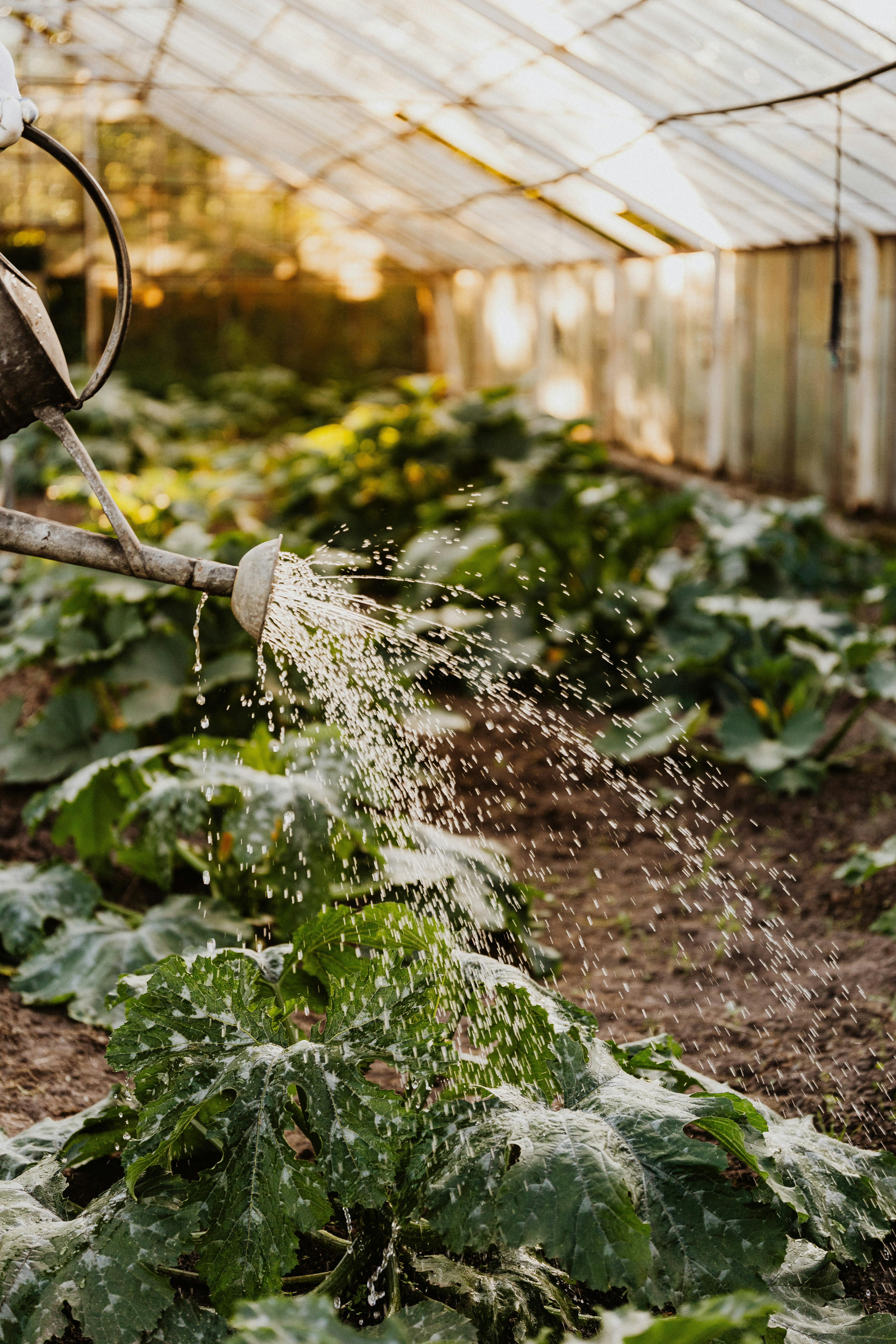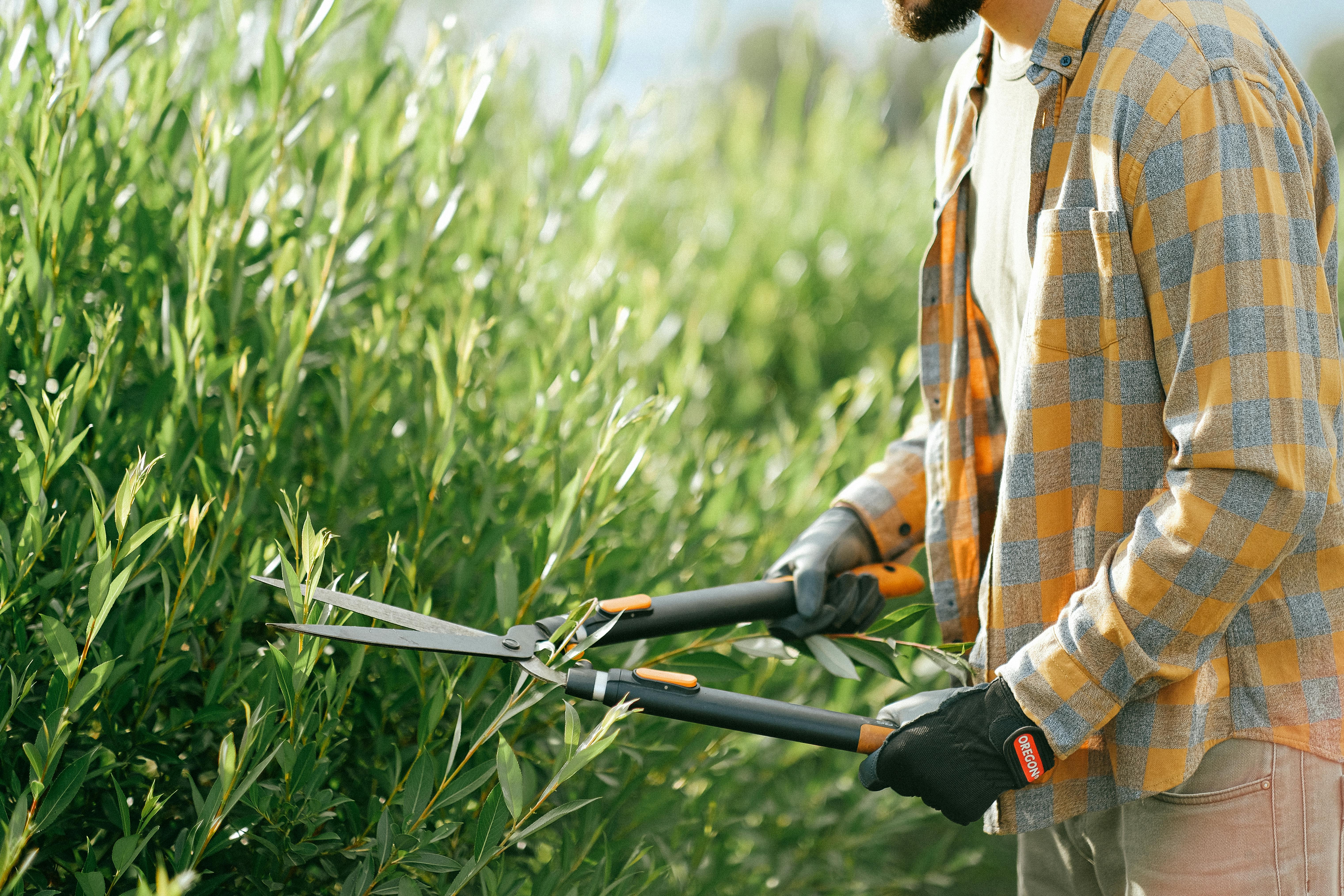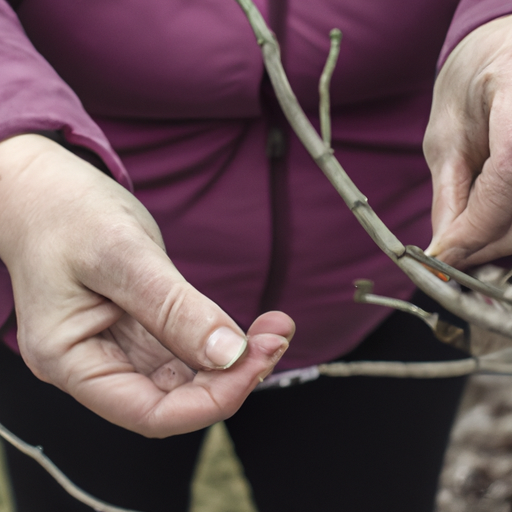How Do You Get Rid Of Small Trees? So you’ve found yourself faced with pesky small trees that seem to keep popping up all over your yard, and you’re wondering how on earth you can get rid of them. Well, fret not, because in this article, we’ll show you some simple and effective methods to bid farewell to those unwanted saplings. Whether you want to reclaim your space for a lush lawn or prevent these budding plants from becoming a nuisance, we’ve got you covered. With a few handy tools and a dash of determination, you’ll soon be saying goodbye to those small trees once and for all.
Methods for Removing Small Trees
If you’ve ever found yourself faced with the task of getting rid of small trees on your property, you know it can be a challenging endeavor. However, there are several methods available to help you effectively remove those unwelcome trees. In this article, we will explore three primary methods for removing small trees: physical removal, chemical removal, and mechanical removal. We’ll also discuss safety measures and precautions, offer tips to make the task easier, explore disposal options, touch on eco-friendly alternatives, and provide information on hiring professional tree removal services.
Physical Removal
Hand Digging
Hand digging is a popular method for removing small trees, especially those with shallow root systems. To tackle this method, start by digging a trench around the base of the tree with a shovel, making sure to expose the roots. Gradually work your way around the tree, loosening the soil and gently pulling the tree out of the ground. This method requires physical strength and patience, but it is an effective way to remove small trees.
Cutting and Pulling
If the tree you’re trying to remove has a larger root system, cutting and pulling may be the way to go. Begin by using a chainsaw or pruning saw to cut the tree down to a manageable height. Once the tree is cut, you can use a root or brush grubber tool to grab hold of the base of the tree and pull it out of the ground. This method takes some effort, but it’s a satisfying way to remove small trees.
Using a Shovel or Spade
Using a shovel or spade is another option for removing small trees. Begin by digging a trench around the tree, similar to the hand digging method. Once the trench is dug, use the leverage of the shovel or spade to pry the tree out of the ground. This method is best suited for trees with medium-sized root systems.
Digging with a Mattock
For stubborn small trees with deep taproots, using a mattock can make the task much easier. A mattock is a versatile tool that combines a pickaxe and an adze. Start by digging a trench around the tree with the pickaxe end of the mattock, then switch to the adze end to loosen the soil and cut through the smaller roots. Once the trenches are complete, use the pickaxe end to pry the tree out of the ground. Digging with a mattock provides the leverage needed to remove small trees with strong root systems.
Using a Tree Spade
If you have access to a tree spade, this tool can make quick work of removing small trees. A tree spade is a specialized piece of equipment with a large scoop-shaped blade designed to remove trees and their root balls. Simply position the tree spade around the tree, making sure it is deep enough to capture the entire root ball, and then lift the tree out of the ground. This method is most effective for larger small trees and is commonly used by professionals.

Chemical Removal
Herbicides
Chemical removal is another effective method for getting rid of small trees, particularly those with extensive root systems. Herbicides can be a powerful tool in the fight against unwanted vegetation. There are various herbicides available on the market, so it’s important to choose one that is suitable for your specific needs. Follow the manufacturer’s instructions for application and be sure to use protective gear to minimize exposure.
Basal Bark Herbicide Application
Basal bark herbicide application is a technique that involves applying herbicide directly to the bark of the tree’s lower trunk. This method is particularly effective for woody plants and can be used year-round. To apply the herbicide, mix it according to the manufacturer’s instructions and then use a low-pressure sprayer or brush to evenly coat the bark. The herbicide is then absorbed by the tree, ultimately killing it.
Stump and Brush Killer
Stump and brush killer is a specialized herbicide formulated specifically for treating unwanted trees and brush. This type of herbicide typically comes in a concentrated form and needs to be diluted before application. Once diluted, it can be applied directly to the stump or brush using a sprayer or paintbrush. Be sure to follow the instructions on the product label for the most effective and safe application.
Systemic Herbicides
Systemic herbicides are designed to be absorbed by the foliage or root system and translocate through the tree, eventually killing it from within. These herbicides are particularly effective for targeting small trees with well-developed root systems. Apply the systemic herbicide according to the manufacturer’s instructions, ensuring that it is properly diluted and applied evenly to the tree. Keep in mind that it may take several weeks or months for the tree to die completely.
Mechanical Removal
Using a Chainsaw
Mechanical removal involves using power tools to cut through the tree and remove it from the ground. One commonly used tool for small tree removal is a chainsaw. Begin by cutting the tree down to a manageable height, making sure to follow proper chainsaw safety guidelines. Once the tree is cut, you can then use a root or brush grubber tool, as mentioned earlier, to pull the tree out of the ground. Using a chainsaw can make quick work of small tree removal, but it should be operated with caution.
Using a Brush Cutter
A brush cutter is another tool that can be useful for removing small trees. These tools are similar to string trimmers but are equipped with more powerful cutting blades capable of tackling thicker vegetation. To remove a small tree with a brush cutter, simply cut the tree down to a reachable height and then use the blades of the brush cutter to cut through the tree at the base. With some persistence, the tree can be cut into manageable pieces and easily removed.
Using a Weed Whacker
If you don’t have access to a chainsaw or brush cutter, a weed whacker can serve as a makeshift tool for small tree removal. Although it may take more time and effort, a weed whacker with a cutting blade attachment can be used to gradually cut down a small tree. Begin by cutting through the tree at the base, taking care to avoid any debris or flying objects. Once the tree is cut, you can continue to trim and cut until the tree is fully removed.
Using a Tree Puller
For those dealing with a smaller number of small trees, a tree puller attachment for a tractor or skid steer can be a time-saving solution. These attachments have powerful jaws that can grip the entire tree, including the root ball, allowing for quick and efficient removal. Simply position the tree puller attachment around the tree, engage the jaws, and lift the tree out of the ground. This method is ideal for large small trees or multiple small tree removal.

Safety Measures and Precautions
When undertaking any tree removal task, it’s essential to prioritize safety. Here are some important safety measures and precautions to keep in mind:
Wearing Protective Gear
Before starting any tree removal project, make sure to wear the proper protective gear. This includes safety goggles or glasses to protect your eyes from flying debris, sturdy gloves to protect your hands, and steel-toed boots for foot protection. Additionally, consider wearing ear protection and a hard hat to guard against noise and falling objects.
Ensuring Stability and Balance
Maintaining stability and balance while removing small trees is crucial. Be aware of your footing at all times and take precautions to prevent slips and falls. If working on uneven ground, use caution and consider placing boards or platforms under your feet for stability. If the tree is larger or more challenging to remove, avoid standing directly under it to minimize the risk of injury.
Avoiding Unstable Ground
It’s important to assess the ground conditions before attempting to remove a small tree. Avoid working in areas with soft, wet, or unstable ground, as this can increase the risk of accidents and injuries. If the ground is too soft or unstable, it may be necessary to postpone the removal until the conditions are more favorable.
Using Tools Correctly
Proper tool usage is vital when removing small trees. Ensure that you are familiar with the tools being used and follow the manufacturer’s instructions for safe operation. Keep tools sharp and well-maintained to optimize their cutting efficiency. When using power tools, such as chainsaws or brush cutters, be sure to understand how to safely use and maintain them to prevent injury.
Having Assistance
Removing small trees can be a physically demanding task, and having someone assist you can greatly improve safety and efficiency. An extra set of hands can help stabilize the tree, provide support during lifting, or act as a lookout for any potential hazards. If possible, enlist the help of a friend or family member when removing small trees.
Tips to Make the Task Easier
While removing small trees may be labor-intensive, there are several tips and techniques that can make the task easier and more manageable. Here are some helpful suggestions:
Choosing the Right Time
Selecting the right time to remove small trees can make a significant difference. It’s generally recommended to remove trees during the dormant season, usually late fall or winter. During this time, the tree is not actively growing, which can make removal easier and prevent resprouting.
Water Soaking the Ground
If you’re struggling with removing small trees with stubborn roots, consider watering the ground around the tree a day or two before the removal. This can help soften the soil, making it easier to dig or loosen the roots. Watering the ground beforehand can also reduce the risk of the tree breaking or damaging surrounding structures during removal.
Trimming the Tree First
Before attempting to remove a small tree, it can be helpful to trim any excessive or protruding branches. This not only makes the tree more manageable to handle but also reduces the overall weight and size of the tree. Trimming the tree beforehand can make the removal process smoother and less physically demanding.
Using Proper Techniques
Utilizing proper techniques while removing small trees can greatly improve efficiency. For example, when digging around the tree, start by creating a shallow trench before gradually deepening it. This approach allows you to expose the roots and remove soil more easily. Additionally, when cutting the tree, make sure to cut at a slight angle to prevent the saw from becoming stuck.

Disposal Options for Small Trees
Once you’ve successfully removed the small trees from your property, you’ll need to consider various disposal options. Here are some common methods for disposing of small trees:
Composting
If you have the space and resources, composting small trees is an eco-friendly disposal option. Chipped or shredded tree material can be mixed with other organic materials, such as leaves and yard waste, to create nutrient-rich compost for your garden or landscaping.
Chipping or Mulching
Chipping or mulching the small trees can provide you with valuable material for various landscaping purposes. Renting a wood chipper or hiring a professional tree service to chip the trees into mulch is an excellent way to repurpose the material and enhance the aesthetic appeal of your property.
Curbside Pickup
Many municipalities offer curbside pickup for yard waste, including small trees. Check with your local waste management or recycling program to find out if they accept small trees and what their guidelines and schedule are for pickup. Be sure to prepare the trees according to their requirements, such as bundling or cutting them into specific lengths.
Burning (where permitted)
Burning small trees as a disposal method is an option in some areas, but it is essential to research and follow local regulations and safety guidelines. Some locations may require permits, specific burn areas, or exclude certain types of trees from burning. Always prioritize safety and be respectful of air quality and neighboring properties.
Eco-Friendly Alternatives
When dealing with small trees, it’s essential to consider eco-friendly alternatives to complete removal. Here are a few ecologically conscious approaches to managing unwanted small trees:
Planting Taproot Inhibiting Species
If you’re looking to prevent small trees from sprouting or growing in unwanted areas, consider planting taproot inhibiting species. Certain plants release chemicals into the soil that can discourage the growth of other trees, limiting the need for extensive removal efforts. Some examples of taproot inhibiting species include black walnut, black locust, and sugar maple.
Regular Pruning and Maintenance
Regular pruning and maintenance of existing trees can help prevent small trees from sprouting and becoming problematic in the first place. By selectively trimming branches and removing potential saplings, you can maintain a well-manicured landscape while minimizing the need for extensive tree removal.
Introducing Goats or Sheep for Grazing
For large properties or rural areas, considering the introduction of goats or sheep for grazing can be an effective and environmentally friendly solution. These animals naturally prefer grazing on smaller vegetation, including small trees. By allowing them access to the areas where unwanted trees are present, you can slowly and naturally control their growth without resorting to mechanical or chemical removal methods.

Professional Tree Removal Services
While many small tree removal tasks can be completed by homeowners, there may be instances where it’s best to hire professional tree removal services. Here are some considerations when deciding whether to enlist the help of professionals:
When to Hire Professionals
It’s advisable to hire professional tree removal services if you’re dealing with larger or more challenging small trees, especially those near structures, power lines, or in precarious positions. Professionals possess the necessary knowledge, skills, and equipment to handle such situations safely and efficiently. If you’re unsure about the potential hazards or complexities of removing a small tree, it’s best to consult with a professional.
Choosing a Reliable Service
When selecting a tree removal service, it’s crucial to choose a reliable and reputable company. Research local tree removal services and read customer reviews to determine their track record and level of customer satisfaction. Look for companies that are licensed, insured, and certified by tree care organizations, as their expertise and professionalism can provide peace of mind.
Requesting Service Quotes
Obtaining multiple service quotes is a common practice when hiring professional tree removal services. Reach out to several companies and request detailed quotes that outline the scope of work, costs, and any additional services provided. Comparing quotes can help you make an informed decision and ensure that you receive quality service at a reasonable price.
Conclusion
Removing small trees from your property requires careful consideration and the appropriate methods. Whether you choose physical removal, chemical removal, or mechanical removal, it’s important to prioritize safety and follow proper techniques. Remember to wear protective gear, ensure stability and balance, and use tools correctly. Additionally, utilize tips to make the task easier, explore disposal options, and consider eco-friendly alternatives. If necessary, consult professional tree removal services for more challenging or hazardous situations. By applying these methods and taking the necessary precautions, you can successfully get rid of small trees and maintain a beautiful and well-maintained landscape.


